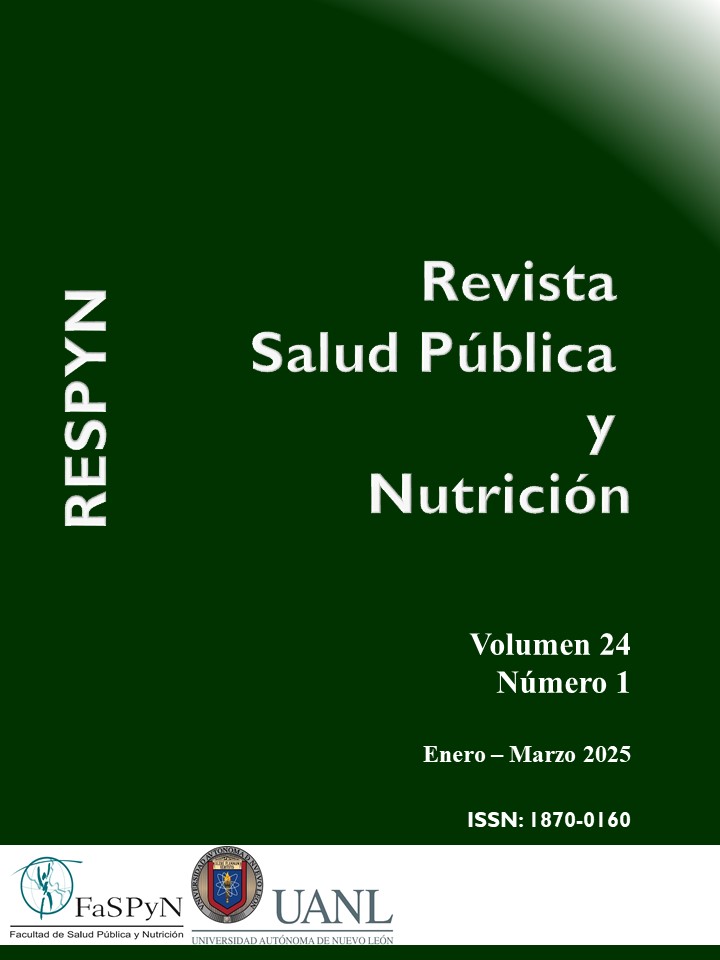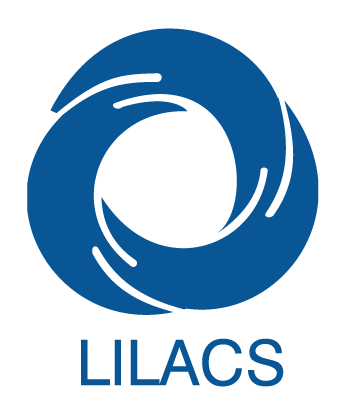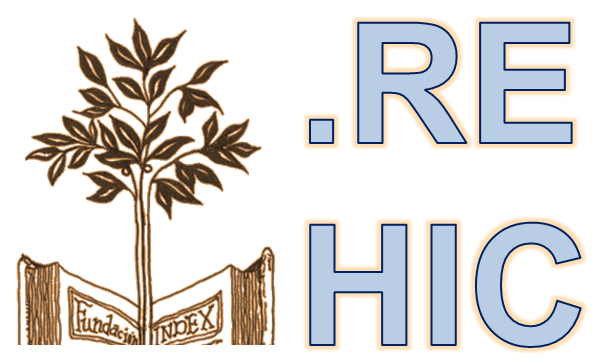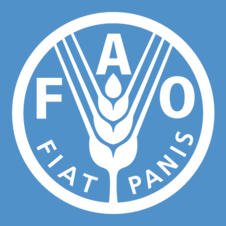Mercadotecnia de alimentos en México: revisión sistemática sobre su impacto en la dieta infantil
DOI:
https://doi.org/10.29105/respyn24.1-840Palabras clave:
Alimentación, Promoción de alimentos, Marketing de alimentos, NiñosResumen
Introducción: En México, la promoción de alimentos y bebidas no saludables se ha convertido en un problema de salud pública pues ha favorecido el acceso y consumo de alimentos ultraprocesados desde la niñez. Objetivo: Analizar la naturaleza y alcance de las estrategias promocionales en las conductas alimentarias de los niños y caracterizar los contenidos nutricionales de los alimentos publicitados a través de una revisión sistemática. Material y Método: Se caracterizaron las estrategias promocionales dirigidas a niños a través de una revisión basada en la declaración PRISMA. La estrategia de búsqueda se estableció en tres bases de datos: PubMed, Scielo y BVS, considerando el periodo 2010 a 2023, con términos de búsqueda en inglés y español. La metodología responde a dos preguntas de investigación: ¿Cuál es la naturaleza del marketing de alimentos dirigida a niños?; y ¿Cuál es el alcance del marketing de alimentos y bebidas en la dieta de los niños? Resultados: Se encontró que más del 90% de los alimentos promocionados no cumplía con los estándares de calidad nutricional, siendo las bebidas azucaradas, cereales dulces y snacks los alimentos más promocionados. Conclusión: El personaje publicitario fue la estrategia promocional más utilizada en televisión, redes sociales y empaque de alimentos.
Palabras Clave: Alimentación, promoción de alimentos, niños.
Descargas
Citas
Ares, G., Arrúa, A., Antúnez, L., Vidal, L., Machín, L., Martínez, J., Curutchet, M. R., & Giménez, A. (2016). Influence of label design on children’s perception of two snack foods: Comparison of rating and choice-based conjoint analysis. Food Quality and Preference, 53, 1–8. https://doi.org/10.1016/j.foodqual.2016.05.006
Bacardí-Gascón, M., Díaz-Ramírez, G., López, B. C., Zuñiga, E. L., & Jiménez-Cruz, A. (2013). TV food advertisements’ effect on food consumption and adiposity among women and children in Mexico. Nutrición Hospitalaria, 28(6), 1900–1904. https://dx.doi.org/10.3305/nh.2013.28.6.6966
Barquera, S., Hernández-Barrera, L., Rothenberg, S. J., & Cifuentes, E. (2018). The obesogenic environment around elementary schools: food and beverage marketing to children in two Mexican cities. BMC Public Health, 18(1). https://doi.org/10.1186/s12889-018-5374-0
Contreras-Manzano, A., Jáuregui, A., Nieto, C., Hall, M. G., Vargas-Meza, J., Thrasher, J. F., Illescas-Zárate, D., Barquera, S., & Hammond, D. (2020). The impact of a cartoon character on adults perceptions of Children’s breakfast cereals: a randomized experiment. Nutrition Journal, 19(1). https://doi.org/10.1186/s12937-020-00565-5
Contreras-Manzano, A., Jáuregui, A., Vargas-Meza, J., Nieto, C., Granich-Armenta, A., de Lourdes Alemán Escobar, M., G.-Olvera, A., Cruz-Casarrubias, C., Munguía, A., & Barquera, S. (2022). Objective understanding of front of pack warning labels among Mexican children of public elementary schools. A randomized experiment. Nutrition Journal, 21(1). https://doi.org/10.1186/s12937-022-00791-z
Cruz-Casarrubias, C., Tolentino-Mayo, L., Nieto, C., Théodore, F. L., & Monterrubio-Flores, E. (2021). Use of advertising strategies to target children in sugar‐sweetened beverages packaging in Mexico and the nutritional quality of those beverages. Pediatric Obesity, 16(2). https://doi.org/10.1111/ijpo.12710
Demers-Potvin, É., White, M., Potvin Kent, M., Nieto, C., White, C. M., Zheng, X., Hammond, D., & Vanderlee, L. (2022). Adolescents’ media usage and self-reported exposure to advertising across six countries: implications for less healthy food and beverage marketing. BMJ Open, 12(5), e058913. https://doi.org/10.1136/bmjopen-2021-058913
Diario Oficial de la Federación. (2020). Modificación a la Norma Oficial Mexicana NOM-051-SCFI/SSA1-2010, Especificaciones generales de etiquetado para alimentos y bebidas no alcohólicas preenvasados. Secretaria de Gobernación.www.dof.gob.mx/normasOficiales/4010/seeco11_C/seeco11_C.htm
Encuesta Nacional de Salud y Nutrición de Medio Camino ¨[ENSANUT]. (2016). Instituto Nacional de Salud Pública. https://www.insp.mx/images/stories/2017/Avisos/docs/180315_encuesta_nacional_de_salud_y_nutricion_de_medio_Ca.pdf
Fondo de las Naciones Unidas para la Infancia [UNICEF]. (2019, octubre). Estado Mundial de la Infancia 2019. Niños, alimentos y nutrición: crecer bien en un mundo en transformación. https://www.unicef.org/es/informes/estado-mundial-de-la-infancia-2019
Kelly, B., Halford, J., Boyland, E., Chapman, K., Bautista, I., & Berg, C. (2010). Television food advertising to children: A global perspective. American Journal of Public Health, 100(9), 1730–1736. https://doi.org/10.2105/AJPH.2009.179267
Kotler, J. A., Schiffman, J. M., & Hanson, K. G. (2012). The influence of media characters on children’s food choices. Journal of Health Communication, 17(8), 886–898. https://doi.org/10.1080/10810730.2011.650822
Lapierre, M. A., Vaala, S. E., & Linebarger, D. L. (2011). Influence of licensed spokescharacters and health cues on children’s ratings of cereal taste. Archives of Pediatrics & Adolescent Medicine, 165(3). https://doi.org/10.1001/archpediatrics.2010.300
Leonard, B., Campbell, M. C., & Manning, K. C. (2019). Kids, caregivers, and cartoons: The impact of licensed characters on food choices and consumption. Journal of Public Policy & Marketing, 38(2), 214–231. https://doi.org/10.1177/0743915619827919
Letona, P., Chacon, V., Roberto, C., & Barnoya, J. (2014). Effects of licensed characters on children’s taste and snack preferences in Guatemala, a low/middle income country. International Journal of Obesity, 38(11), 1466–1469. https://doi.org/10.1038/ijo.2014.38
López-Barrón, R. G., Jiménez-Cruz, A., & Bacardí-Gascón, M. (2015). Modifiable environmental obesity risk factors among elementary school children in a Mexico-us border city. Nutrición Hospitalaria, 31(5), 2047–2053. https://doi.org/10.3305/nh.2015.31.5.8669
McGale, L. S., Halford, J. C. G., Harrold, J. A., & Boyland, E. J. (2016). The influence of brand equity characters on children’s food preferences and choices. The Journal of Pediatrics, 177, 33–38. https://doi.org/10.1016/j.jpeds.2016.06.025
Munguía-Serrano, A., Tolentino-Mayo, L., Théodore, F. L., & Vandevijvere, S. (2020). Nutritional quality of hidden food and beverage advertising directed to children: Extent and nature of product placement in Mexican television programs. International Journal of Environmental Research and Public Health, 17(9), 3086. https://doi.org/10.3390/ijerph17093086
Nieto, C., Espinosa, F., Valero-Morales, I., Boyland, E., Potvin Kent, M., Tatlow-Golden, M., Ortiz-Panozo, E., & Barquera, S. (2023). Digital food and beverage marketing appealing to children and adolescents: An emerging challenge in Mexico. Pediatric Obesity, 18(7). https://doi.org/10.1111/ijpo.13036
Nieto, C., Rincón-Gallardo Patiño, S., Tolentino-Mayo, L., Carriedo, A., & Barquera, S. (2017). Characterization of breakfast cereals available in the Mexican market: Sodium and sugar content. Nutrients, 9(8), 884. https://doi.org/10.3390/nu9080884
Organización Mundial de la Salud [OMS]. (2010, 15 de junio). Conjunto de recomendaciones sobre la promoción de alimentos y bebidas no alcohólicas dirigida a los niños. https://www.who.int/es/publications/i/item/9789241500210
Organización Panamericana de la Salud [OPS]. (2011). Recomendaciones de la Consulta de Expertos de la Organización Panamericana de la Salud sobre la promoción y publicidad de alimentos y bebidas no alcohólicas dirigida a los niños en la Región de las Américas. https://www.paho.org/hq/dmdocuments/2012/Experts-Food-Marketing-to-Children-(SPA).pdf
Ortiz-Pérez, H., Molina-Frechero, N., Martínez-Barbabosa, I., & Córdova-Moreno, R. (2015). Contenido nutricional de los alimentos promovidos por el Canal 5 de la televisión mexicana dirigidos a la población infantil. Revista Chilena de Nutrición,42(3), 260–266.
https://doi.org/10.4067/s0717-75182015000300006
Oviedo-Solís, C., Monterrubio-Flores, E., Cediel, G., Denova-Gutiérrez, E., & Barquera, S. (2022). Trend of ultraprocessed product intake is associated with the double burden of malnutrition in Mexican children and adolescents. Nutrients, 14(20), 4347. https://doi.org/10.3390/nu14204347
Pérez-Salgado, D., Rivera-Márquez, J. A., & Ortiz-Hernández, L. (2010). Publicidad de alimentos en la programación de la televisión mexicana: ¿los niños están más expuestos? Salud Publica de México, 52(2). https://www.scielo.org.mx/pdf/spm/v52n2/v52n2a03.pdf
Popkin, B. (2020). El impacto de los alimentos ultraprocesados en la salud El impacto de los alimentos ultraprocesados en la salud. 2030. Alimentación, agricultura y desarrollo sostenible en América Latina y el Caribe, 34. FAO.
Rincón-Gallardo Patiño, S., Tolentino-Mayo, L., Flores Monterrubio, E. A., Harris, J. L., Vandevijvere, S., Rivera, J. A., & Barquera, S. (2016). Nutritional quality of foods and non-alcoholic beverages advertised on Mexican television according to three nutrient profile models. BMC Public Health, 16(1). https://doi.org/10.1186/s12889-016-3298-0
Theodore, F., Juárez, C., Cahuana, L., Blanco, I., Tolentino, L., & Bonvecchio, A. (2014). Barreras y oportunidades para la regulación de la publicidad de alimentos y bebidas dirigida a niños en México. Salud Publica de México, 56(2), 123–129. https://www.scielo.org.mx/pdf/spm/v56s2/v56s2a5.pdf
Shamah-Levy, T., Romero-Martínez, M., Barrientos-Gutiérrez, T., Cuevas-Nasu, L., Bautista-Arredondo, S., Colchero, M. A., Gaona-Pineda, E. B., Lazcano-Ponce, E., Martínez-Barnetche, J., Alpuche-Arana, C., Rivera-Dommarco, J. (2021). Encuesta Nacional de Salud y Nutrición 2020 sobre Covid-19. Resultados Nacionales. Instituto Nacional de Salud Pública de México. https://ensanut.insp.mx/encuestas/ensanutcontinua2020/doctos/informes/ensanutCovid19ResultadosNacionales.pdf
Théodore, Lopez, Cruz, Mendoza, Barquera, & Tolentino. (2021). Digital marketing of products with poor nutritional quality: a major threat for children and adolescents. Public Health, 198. https://doi.org/10.1016/j.puhe.2021.07.040
Théodore, Tolentino, Bahena, L., Velasco, A., Popkin, B., Rivera, J., & Barquera, S. (2017). Pitfalls of the self-regulation of advertisements directed at children on Mexican television. Pediatric Obesity, 312–319. https://doi.org/10.1111/ijpo.12144
UNICEF. (2021a). Publicidad y promoción de alimentos y bebidas dirigidas a niños y adolescentes en los puntos de venta en México. (Primera Edición). https://www.insp.mx/resources/images/stories/2022/docs/220104_Unicef_digital.pdf
UNICEF. (2021b). Regulación de la publicidad de alimentos y bebidas no saludables dirigida a niños, niñas y adolescentes. UNICEF México. https://www.unicef.org/mexico/documents/marketing-de-alimentos-y-bebidas-dirigido-niñas-niños-y-adolescentes
Valero-Morales, I., Nieto, C., García, A., Espinosa-Montero, J., Aburto, T., Tatlow-Golden, M., Boyland, E., & Barquera, S. (2023). The nature and extent of food marketing on Facebook, Instagram, and YouTube posts in Mexico. Pediatric Obesity, 18(5). https://doi.org/https://doi.org/10.1111/ijpo.13016
Vega, I., Vázquez, J., Reynoso, A., Ceruelos, C., Hernández, C., & Ledezma, J. (2020). La alimentación en México y la influencia de la publicidad ante la debilidad en el diseño de políticas públicas. JONNPR, 853–862. https://doi.org/10.19230/jonnpr.3259
Descargas
Publicado
Cómo citar
Número
Sección
Licencia
Derechos de autor 2025 Anaid Guadalupe Martín Díaz, Virginia Gabriela, Fatima Ezzahra Housni, Nora Rangel Bernal, Yolanda Campos Uscanga

Esta obra está bajo una licencia internacional Creative Commons Atribución 4.0.
Los derechos del trabajo pertenecen al autor o autores, sin embargo, al enviarlo a publicación en la Revista Salud Pública y Nutrición de la Facultad de Salud Pública y Nutrición de la Universidad Autónoma de Nuevo León, le otorgan el derecho para su primera publicación en medio electrónico, y posiblemente, en medio impreso a la Revista Salud Pública y Nutrición. La licencia que se utiliza es la de atribución de Creative Commons , que permite a terceros utilizar lo publicado siempre que se mencione la autoría del trabajo y a la primera publicación que es en la Revista Salud Pública y Nutrición. Asimismo, el o los autores tendrán en cuenta que no estará permitido enviar la publicación a ninguna otra revista, sin importar el formato. Los autores estarán en posibilidad de realizar otros acuerdos contractuales independientes y adicionales para la distribución no exclusiva de la versión del artículo publicado en la Revista Salud Pública y Nutrición (p. ej., repositorio institucional o publicación en un libro) siempre que indiquen claramente que el trabajo se publicó por primera vez en la Revista Salud Pública, Revista de la Facultad de Salud Pública y Nutrición de la Universidad Autónoma de Nuevo León.














